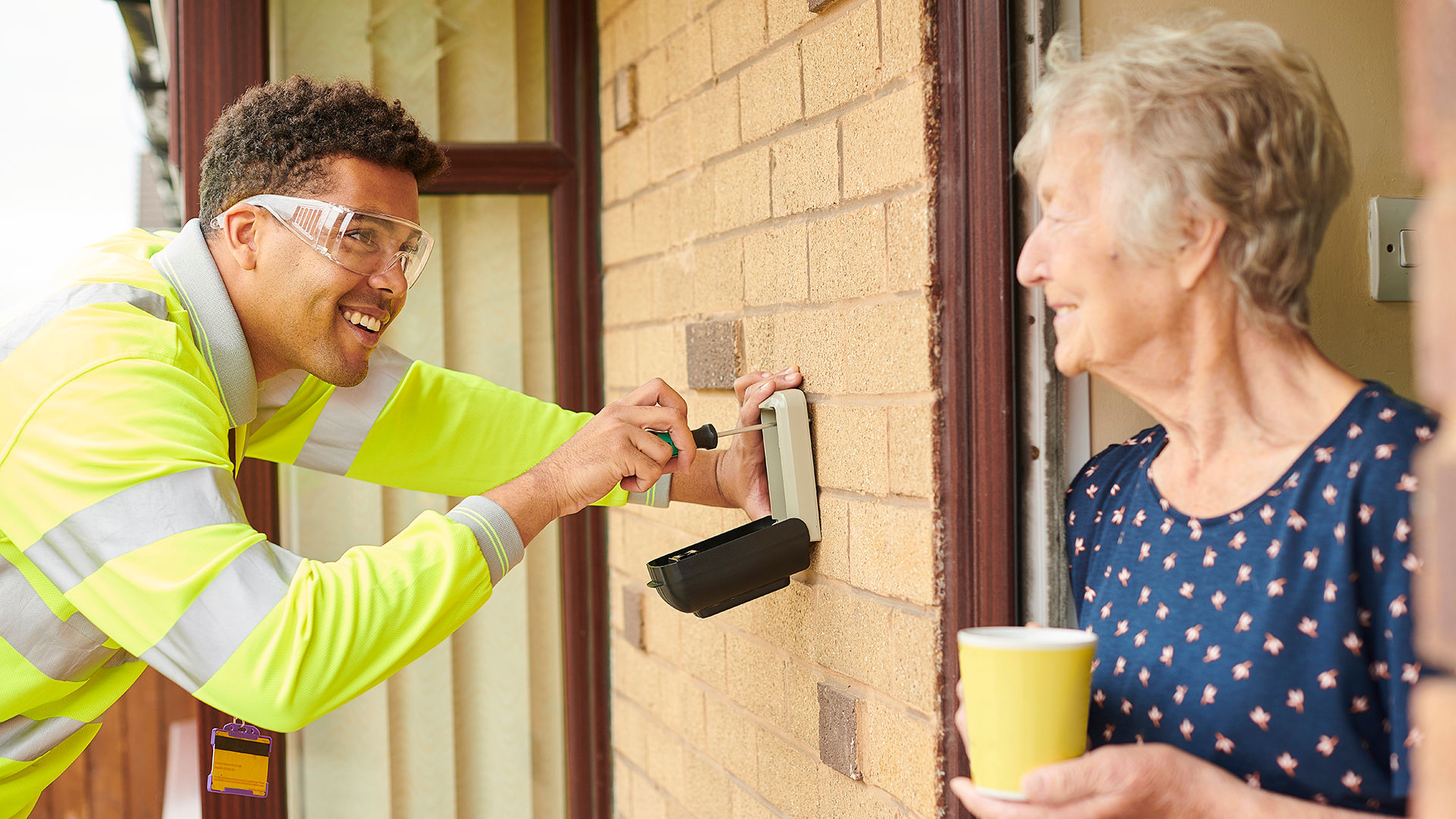As your parents grow older, one of the biggest decisions you might face is how to help them live safely and comfortably. While some seniors prefer to stay in their homes, aging in place can come with challenges – mainly in the form of home modifications. These renovations can be costly, time consuming and stressful. In some cases, it may make more sense to consider downsizing and helping your parent move to a senior living apartment.
Here's a breakdown of the essential home modifications for older adults aging at home and why making the move to a senior living community could be the simpler, smarter choice.
- Bathroom
- Door and hallway
- Stairway
- Kitchen
- Lighting
- Flooring
- Home security
- Outdoor
- To sum it up
- Make every day a Holiday
Bathroom modifications
Slips and falls are a common worry for older adults, especially in the bathroom. To keep your parent safe, it's important to install grab bars near the toilet and inside the shower. You might also want to consider converting their shower to a walk-in model that includes a bench and non-slip flooring for added stability. Additionally, upgrading to a raised toilet can help reduce strain on the knees and back, making it easier and safer for your parent to use.
Consider senior living: Many independent living communities already have bathrooms that are designed with senior safety in mind. They often include these features as standard, so you don’t need to worry about making these upgrades yourself.
Door and hallway modifications
If your parent uses – or may need – a wheelchair or walker, the standard width of doorways and hallways might not be sufficient. Widening them can be a major renovation, requiring time, skilled contractors and permits.
Consider senior living: Independent living communities are typically designed with accessibility in mind. Wider hallways and doorways are already built in, along with ramps and elevators.
Stairway modifications
If your parent’s home has multiple levels, stairs can become a big obstacle. Installing a stairlift or even an elevator is a large project that requires both a financial and emotional investment.
Consider senior living: Many independent living options are either one-story or have elevators, eliminating the need for stair modifications.
Kitchen modifications
Cooking can become challenging as mobility and flexibility decline. You might need to lower countertops, cabinets and shelves to make kitchen tasks easier and safer.
Consider senior living: In an independent living community, your parent can still cook if they enjoy it, but most communities also offer dining services, making kitchen accessibility less of a concern.
Lighting modifications
As eyesight diminishes, bright, focused lighting becomes even more important. You’ll need to upgrade the lighting throughout your parent’s home – especially in hallways, staircases and frequently used rooms. This might include adding more light fixtures, installing motion-activated lights or using higher-wattage bulbs.
Consider senior living: Most independent living spaces are designed with seniors in mind, so the lighting is already set up to meet their needs.
Flooring modifications
Rugs, slippery tiles and uneven flooring are common culprits for falls. You’ll need to install non-slip flooring in areas like the kitchen and bathroom and remove or secure any loose rugs or mats.
Consider senior living: Communities for seniors usually come with flooring that minimizes fall risks, like low-pile carpets and non-slip surfaces.
Home security modifications
Ensuring your parent’s safety includes upgrading their home security system and installing medical alert systems for emergencies. This might include adding security cameras, doorbell cameras and systems that alert you or emergency services if your parent needs help.
Consider senior living: In an independent living community like Holiday, safety measures such as 24/7 security, medical alert systems and emergency response services are already in place.
Outdoor modifications
If your parent has stairs leading up to their front or back door, you’ll likely need to install ramps and railings to accommodate mobility challenges. These additions can be tricky depending on the slope of the yard and local regulations.
Consider senior living: Many senior living communities are designed to be fully accessible, with built-in ramps or no stairs at the entrance.
To sum it up
While making these home modifications allows older adults to age in place at home, the time, cost and ongoing maintenance can add up quickly. As your parent’s needs evolve, you may want to make even more changes.
That’s why the option of downsizing to a senior living community is worth considering. Not only are these communities designed with senior accessibility in mind, but they also offer a variety of perks like social events, fitness programs and maintenance-free living.
If your parent requires more help down the road, many retirement communities have on-site care providers, allowing residents to stay in the same place and receive whatever assistance they need, whenever they need it.
Make every day a Holiday
Want to learn more about the benefits of helping a parent make the move to independent senior living? Save the Holiday Retirement Guide to your favorites, subscribe to our YouTube channel or book a private tour.
You might also like
Want to learn more about life at Holiday?
